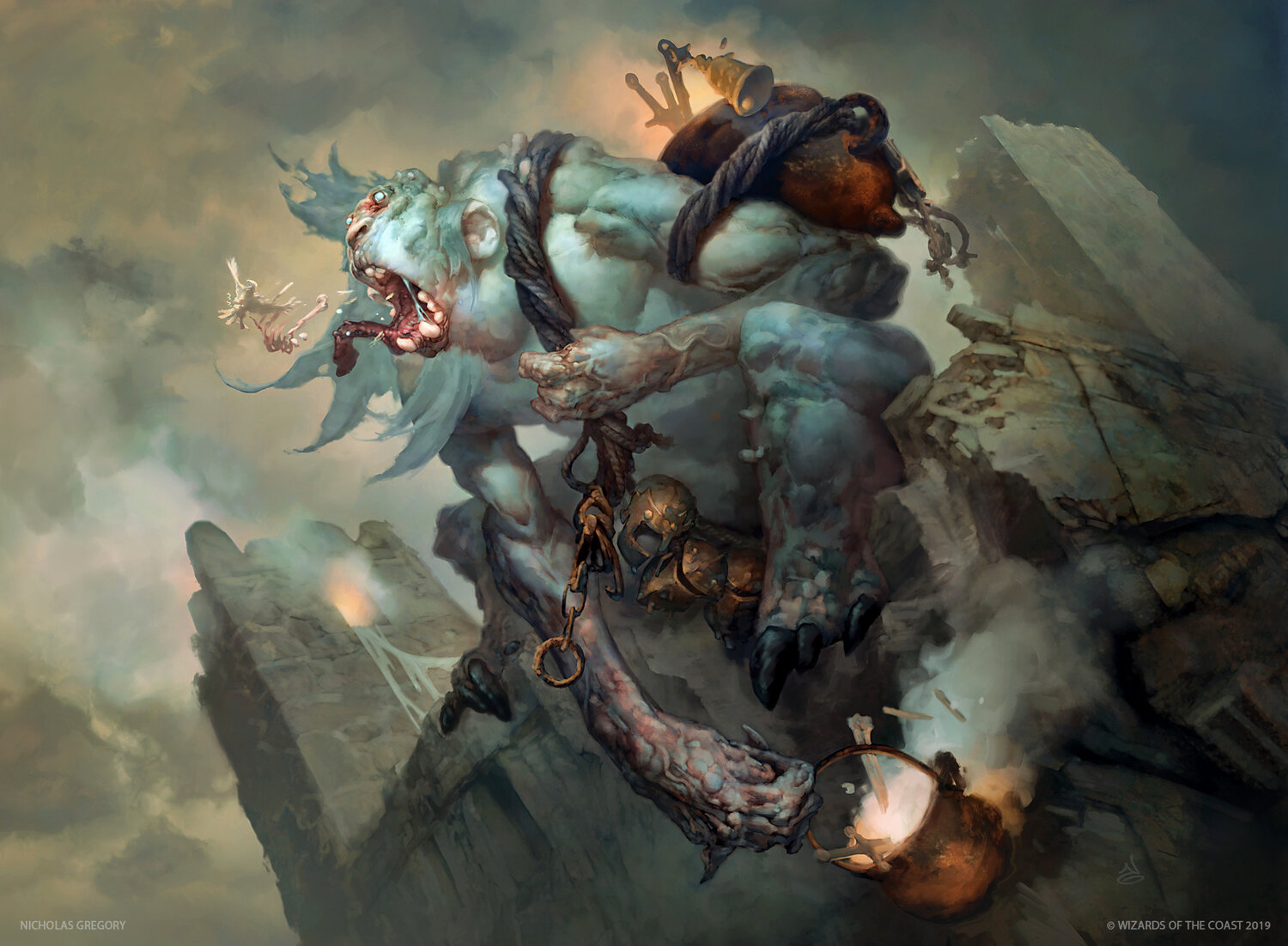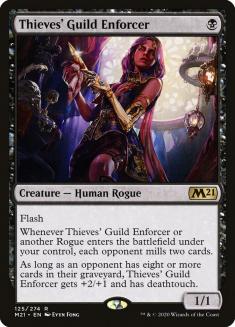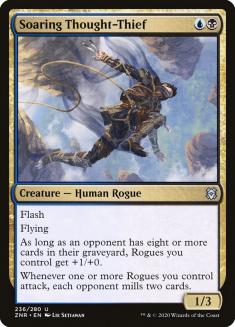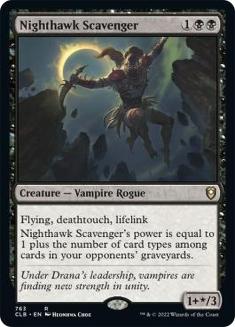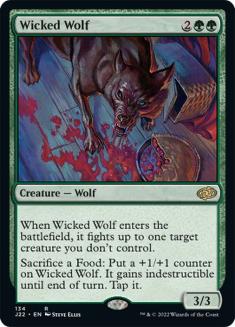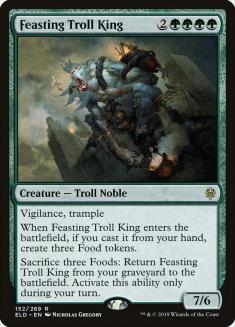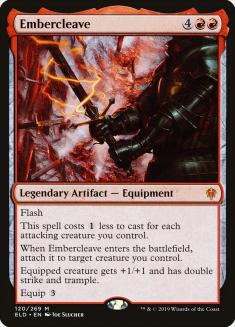Welcome to another edition of Fact or Fiction! Today, Ross Merriam, Dom Harvey, and Paulo Vitor Damo da Rosa are here to give their takes on five statements about Zendikar Rising Standard.
1. If you’re not playing a Yorion, Sky Nomad deck in Zendikar Rising Standard, you’re making a mistake.
Ross Merriam: Fiction. We’ve all been conditioned over the last year to assume the worst is coming when a deck rises to prominence in Standard. From Field of the Dead to Omnath, Locus of Creation, that’s been the story of the format, so I can’t blame anyone too much for assuming we’re on that track again.
But Yorion, Sky Nomad is a lot more vulnerable than those cards. It’s a powerful card that that generates significant card advantage in the right shell, but it’s a much easier card to interact with than Uro, Titan of Nature’s Wrath and doesn’t create the lopsided mana advantage of Wilderness Reclamation.
Yorion has risen to the top of Zendikar Rising Standard because in the early days of the post-ban metagame, players were attracted to mopey midrange decks that can be a bit aggressive but have good removal and a few haymakers going long, aka Golgari Adventures and Rakdos Midrange. People love mopey midrange decks, for reasons that I can only speculate on. And Yorion is great at beating these kinds of strategies. It has the efficient removal to not get run over by their threats and a more robust engine going long.
In a less favorable metagame, Yorion will still succeed but it won’t be dominant. Personally, I’d look to Embercleave, a card they do not interact with well since their removal tends to be sorcery-speed. Mono-Green Aggro may have been good two weeks ago, but it’s time to bite the bullet on the manabase and move back to Gruul Adventures.
Alternatively, Ugin, the Spirit Dragon is a way to go over the top of Yorion decks and contain their battlefield so later Yorions don’t generate much card advantage. How exactly to build that ramp deck is unknown, but if you’re not a fan of Bird Serpent decks, this is an avenue I’d explore.
Dom Harvey: Fact. It’s possible that a Dimir Rogues player who figures out the right way to build it and knows how to play against Yorion will have the best chance of success right now but, as I explain below, that’s a big caveat. Dimir Rogues is also more exploitable than its competition — even if you can be the best Yorion-beater you can be, someone who didn’t get that memo can show up with Kroxa, Titan of Death’s Hunger or Embercleave and blindside you.
With that in mind, the safest choice is a Yorion deck of some kind and the rapidly moving metagame is converging on builds that are well-positioned while also boasting the best card quality in the format. You should play a Yorion deck and read our many articles on that topic this week to find the right one for you!
Paulo Vitor Damo da Rosa: Fiction. I sure hope this is fiction, because I’m not playing a Yorion deck in the MPL split this weekend! I’m not sure Yorion is actually the best deck in a vacuum, but even if we’re willing to accept that they are the most powerful and most popular strategies, the metagame actually has the tools to self-correct now. Decks like Simic Food, Temur Reclamation, and Four-Color Adventures were so good because they had no counter — everyone knew they were going to be the most played decks and the Nash equilibrium still dictated that your best bet was just playing that deck.
This is not the case now — Yorion decks do have predators (Dimir Rogues and Ramp decks for example), so if the metagame adjusts to beat them, then naturally it won’t be a mistake to not play them. I actually expect Dimir Rogues to be the most popular deck this weekend at the MPL split, and not Yorion, which in turn might cause a different shift in the metagame; it’s very hard to pinpoint which deck is the best for any given week even if you can tell which one has the highest power level.
I also think that the format is close enough in power level that, if you simply prefer a different deck, it’s not a mistake to play it. If you told me you didn’t like Temur Reclamation I’d have told you to deal with it and learn the deck, but right now the margins are so thin that you’re not giving up much by playing any of the several Tier 1 decks that exist. If you’re going to play a certain deck at 90% capacity or Yorion at 70% capacity, it’s not a mistake to just choose the other deck.
2. Yorion decks in Zendikar Rising Standard should be 60 cards (with four copies maindeck), not 80 cards (with one as the companion and three in the maindeck).
Ross Merriam: It Depends. In synergy-driven decks like Selesnya Blink with its food theme, adding the extra twenty cards significantly weakens all of the pieces to that engine because you won’t draw them as often or as in high numbers. This increased opportunity cost to play Yorion in the companion slot makes me want to play a 60-card list instead.
In a deck like Esper Doom Foretold that’s more reactive, you don’t have that same cost. The deck may have a namesake card, but it isn’t critical that you draw Doom Foretold early and often for the deck to find success. You can win games drawing most any combination of removal spells and Omens. However, Yorion is critical for the deck to start generating card advantage, so there’s great incentive to have access to a copy every game regardless of your draw.
Essentially, you have to perform a cost-benefit analysis here. So ask yourself how central the card advantage from Yorion is for your deck to function, and how much of a cost diluting your deck is. I suspect this will lead you toward playing 60 cards and four maindeck Yorions in more proactive lists, and 80 cards with a companion Yorion in more reactive lists, but that shouldn’t be a hard rule.
Dom Harvey: Fiction. This is more of a question here than in other formats where you see a lot of 80-card decks with just a companion, the occasional maindeck Yorion among 80 cards, and virtually no 60-card Yorion decks. In five-set Standard you lack both the redundancy on engine cards or interaction that makes it easier to bloat your deck and the upside that this brings with fetchlands or toolbox cards. If you want to play four copies of Yorion it’s because you have high-impact blink targets in mind that are harder to draw consistently in a larger deck — when Skyclave Apparition or Elspeth Conquers Death is your most important tool, you want the actual maximum of four copies rather than the equivalent of three copies that you get with 80 cards.
Despite that, I’d still shy away from Yorion mirrors without a companion by my side. When you can guarantee access to Yorion in the mid-game or late-game, you can make deckbuilding and in-game choices with that in mind and keep the threat of Yorion looming over the game. I’ve found that Azorius Blink (Yorion) shells in particular have trouble closing longer games and a ‘free’ Yorion goes a long way to address that without forcing you to play and find expensive cards that only fill that role. That said, Paulo makes a strong argument in his article for staying with 60 in Selesnya Blink as the Food cards need each other to do anything (also a reason to prefer Azorius, in my view).
Paulo Vitor Damo da Rosa: Fiction. As I said in my article this week, I believe that Selesnya-based decks should play 60 cards but Azorius-based decks (whether Jeskai or Esper or straight Azorius) should play 80. I think this is true because the Food cards from the Selesnya builds are very synergistic with each other (each gets meaningfully better the more of the others you draw) and they don’t have a replacement, so you suffer a bit from playing more than the minimum number of cards, but the Azorius versions don’t have these synergies and have nothing they need to draw to make their deck function, so they can get by with 80. Even then, my confidence in this is not very high and I could certainly end up proven wrong by the time we’re done with this format.
3. Dimir Rogues is a natural foil to Yorion decks in Zendikar Rising Standard and will be their archnemesis moving forward.
Ross Merriam: Fiction. On paper this makes sense. Counterspells, removal, and Into the Story should match up well against Yorion decks. And maybe I’m missing something about these decks. But every time I play a Rogues strategy it falls completely flat.
The problem as it appears to me is that you need to draw the creatures in precisely the right amount. If you draw too many of them, your deck morphs into a bad aggro deck with too many reactive elements. If you draw too few, your best cards, Drown in the Loch and Into the Story, aren’t effective. The margin for error is so small because once the Yorion decks gain traction, it’s hard to get back into the game.
When you also consider that everyone comes prepared for Dimir Rogues strategies with various escape cards, I’m not interested.
Dom Harvey: Fiction. I think it’s a possible foil but not a natural one. The first problem is nailing down just what Dimir Rogues looks like — harder than it appears and harder than it is for other archetypes. The enablers and payoffs are all bad without each other so you need the perfect mix of both but also need the right interaction and a big-picture plan for the marathons common in this format where both players see most of their decks.
Most lists right now play Lurrus of the Dream-Den as a companion but this comes at a steep cost — Brazen Borrower; Rankle, Master of Pranks; and Zareth San, the Trickster are strong incentives to play Rogues that offer protection against popular anti-Rogues sideboard cards. Do you want the Vantress Gargoyles that Seth Manfield took to the Top 8 of the Grand Finals? Which build is best in the mirror?
The Yorion decks also have room to adapt to this aspiring archnemesis. Once the format settles and narrows, Yorion decks can shed their less useful sideboard cards and turn their cannons towards Dimir Rogues. Ultimately, a deck priced into running the likes of Ruin Crab or Merfolk Windrobber is less flexible than a deck that just wants to recur the same good cards as often as possible.
Paulo Vitor Damo da Rosa: Fact. I believe there are many ways of building Yorion decks (60 or 80, several different color combinations) and many ways of building Rogue decks (Crab, Gargoyle, neither, both, Lurrus or not), but I think every Rogues version will be favored versus every Yorion version — the only thing you can do is mitigate the damage. The worst Rogues deck (that’s still a reasonable build, obviously) might only be a small favorite versus the best Yorion list, but it will be a favorite nonetheless, and the gap will be much bigger when you take the least-prepared Yorion deck (for the specific matchup) versus the most-prepared Rogues deck. Decks full of small flash creatures and removal, counterspells, and card drawing have always been the foil to expensive, sorcery-speed decks and this is no exception.
4. Mono-Green Food is the real deal in Zendikar Rising Standard.
Ross Merriam: Fact. I was impressed by this deck on a recent episode of VS Live! and despite the small sample size, it also took down a recent Challenge Event on Magic Online.
It may not be the fastest deck to the battlefield but its creatures are incredible on rate and close the game quickly. In games where your aggro plan is stymied, you have Trail of Crumbs as a great way to generate card advantage. And despite being a green deck, there’s plenty of removal against aggro between Ram Through and Wicked Wolf, a forgotten all-star of Standard seasons past.
But the biggest reason I like this deck is its manabase. Consistency is so valuable for aggro decks, especially in a London Mulligan world, and despite only having one color, this deck has multiple utility lands. Gingerbread Cabin may not look like much, but in the games where it makes a food on Turn 4 for your Wicked Wolf or flat-out draws a card because of Trail of Crumbs, it looks better than Horizon Canopy. That kind of ceiling is impressive out of a land.
Then you have Castle Garenbrig, which is more obviously powerful because we’ve seen what it has done in Modern, though clearly we’re not powering out anything close to as powerful as Primeval Titan here. But any time you can get two mana from your land you’re doing something good. And with Scavenging Ooze, Gilded Goose, and Trail of Crumbs to sink extra mana into, getting a rebate on your creatures can make a big difference.
There are some power level concerns here from being only one color, but most of these are proven cards and the deck’s synergies are strong. I’m putting this squarely into my underrated, though maybe not Tier 1, camp.
Dom Harvey: Fiction. I watched Cedric streaming Mono-Green Food before I got to this question and that answered it for me. I’m not sure what Mono-Green Food is meant to beat other than the aggro decks that the popular consensus has already dismissed, and the measures that Yorion decks are taking to fight each other tag Mono-Green Food as collateral damage.
Paulo Vitor Damo da Rosa: Fiction. I’m not sure what “the real deal” means exactly, but I don’t think Mono-Green Food is it. You could argue that Mono-Green Food is “a real deal,” or simply “real,” and I would begrudgingly agree. I think Mono-Green Food is a deck that you can play and have success with, like many other decks in this format, and it would not be a mistake to play it, but I think decks with Yorion and Dimir Rogues are mostly better.
5. Purely aggressive decks (Gruul Adventures, Mono-Red Aggro, etc.) aren’t good enough to compete in Zendikar Rising Standard.
Ross Merriam: Fiction. Given that I endorsed Gruul Adventures in my response to a previous question, this answer was a given. Aggro decks just need to adapt to the changing times.
We often talk about how control decks take some time to develop because you need a target to build towards with your reactive spells. But once more reactive midrange and control decks enter the metagame, aggro decks need to do the same thing with their threats. Playing cards that match up well against Glass Casket and Elspeth Conquers Death is very important against Yorion decks, as is having access to some proactive Disenchant effects like Skyclave Apparition or Gemrazer.
Similarly important in a Yorion-filled metagame is the ability to close games quickly. It’s nice to have some ability to grind through their early removal spells but you can’t rely on rebuilding more than once or twice, because eventually they will land a Yorion that draws too many cards, a Dance of the Manse for a huge number, or some other powerful effect that trumps whatever you’re doing. They have inevitability, so find a way to close the game before the inevitable happens. That’s part of why I recommended a return to Embercleave.
No deck is immune from having to adapt, even ones that are the most proactive. But Yorion decks have plenty of holes that you can exploit. As I’ve mentioned, they operate mainly at sorcery speed. They are also rather clunky, because they play a lot of cards that are slightly less efficient than they otherwise would be because they provide some incidental value or stay on the battlefield as permanents to be re-used by Yorion. This often opens doors for you to overrun them in the early-game unless they have a sweeper.
Start building your aggro decks from the ground up with Yorion decks in mind and you’ll find ways to have success against them.
Dom Harvey: Fiction. When I look at the smattering of decklists tweeted by MPL and Rivals League members ahead of their competition this weekend, one thing stands out — a lack of respect for aggro. This is somewhat justified given the early trends of the format but makes me wonder if there’s room for it to strike soon. Just this week, I wrote about the stifling effect Bonecrusher Giant was having on aggressive decks, and now that card has all but vanished from the conversation — a sign of how quickly formats move today. I’m not a natural believer in Embercleave, but when I see at most two maindeck copies of Shatter the Sky in these Azorius Blink (Yorion) decks, I’m tempted to put down my Mazemind Tomes and pick up another good book instead.
Paulo Vitor Damo da Rosa: Fiction. This is a wide-open format and every strategy can be good depending on what you expect to face (you might have noticed this as a common theme in my answers this week). Even if purely aggressive decks aren’t good enough to compete now, they certainly will be in a week when everyone has changed their decks. Personally, I think aggro decks definitely are good enough to compete right now and I know multiple MPL players who are playing them in the split — Embercleave is still an extremely powerful card and some Yorion decks that play exclusively at sorcery speed can be quite vulnerable to it.

